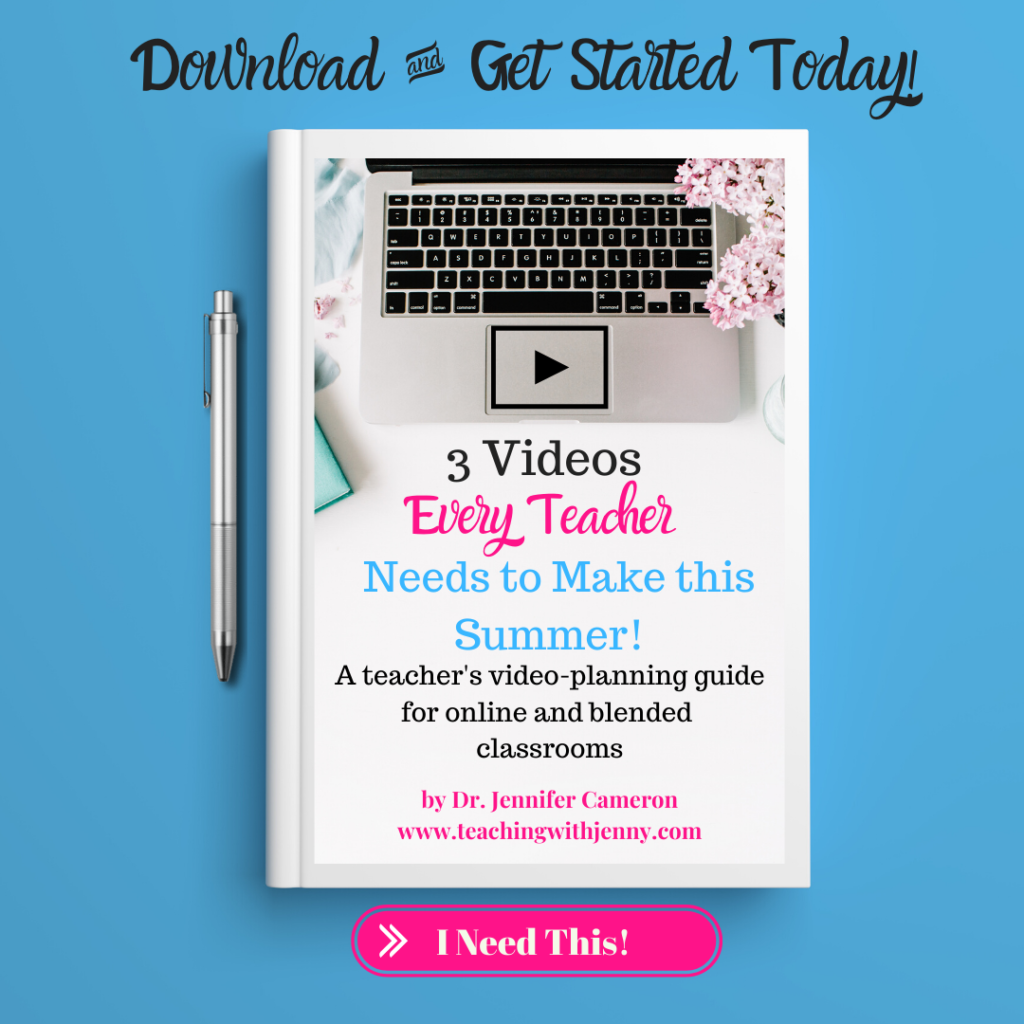Connecting with your students virtually while distance teaching can be challenging. Engaging and emotionally connecting with students online can be very different than connecting with them face-to-face in the classroom.
Human interaction online can challenge our brain’s primal sense of human communication. Video calls can challenge the brain’s ability to read body language, facial expressions, non-verbal cues, and interpret tone of voice.
This can be seen in the phenomena of people waving GOODBYE to each other at the end of a video call. Although they admit they would not wave goodbye at the end of a face-to-face meeting.
According to Larry Rosen, author of The Distracted Mind, waving goodbye is the brain’s way of closing the communication loop. This creates a sense of communication completion in the mind.
So, if you have been fighting the impulse to wave goodbye to your students online, don’t be. It is just your brain’s way of coping with the shift to virtual communication.
Three Ways to Connect with Students Virtually
This type of brain response behavior is part of our subconscious as humans. Below are THREE research-based ways to emotionally connect with students online. How you may ask? By triggering their subconscious mind.

SMILE
I don’t know about you, but I feel a little crazy or “mad” staring into a camera grinning from ear-to-ear. Yet there is a method to that madness that is well worth feeling a little foolish!
We associate smiling with happiness and feeling welcomed. These are two things we want our students to feel when they engage with us online.
Yet, scientific studies have shown that there is another reason that humans smile. This reason is equally important to the online learning process.
According to a study by Yale University researcher, Michael Kraus, people commonly smile at the anticipation-of and participation-in human cooperation.
Teachers know that cooperation is the first step in a student’s learning process.
Who knew you could trigger that process simply by smiling?

EYE CONTACT
Neuroscience suggests that eye contact is connected to the most subconscious region of the mind. It is key to human communication.
Although, if you have ever been on a video conference call you know that eye contact can be a MAJOR issue.
Our brain is telling us to look at the person we are talking to, yet to do that we must look down at our screen. This results in the speaker looking like they are NOT looking the listener in the eye.
One way to address this issue is to bring your computer camera’s lens up to your eye level. You can achieve this by putting your computer on a stack of books, milk crate, or purchase a computer stand.
If you have ever watched the open credits of the Brady Bunch then you can visualize this next problem.
Where to look on a multi-user conference video call?

Video conference calls can also make it difficult to look at the person talking. They may appear in different quadrants of the screen for different participants, due to the computer program.
This issue can result in people feeling a lack of connection and communication.
One way you can address this is by looking directly into the camera’s lens when speaking. This may feel counter intuitive, but the result is it looks to the viewers like you are looking at them in the eye.
This will help your participants feel a sense of communication completion and make you a rock-star, online communicator.

TONE OF VOICE
In a 2017 study, researchers found that the decrease of face-to-face human interaction was affecting human beings ability to process emotions; such as empathy and compassion.
They also discovered that due to the lack of eye-to-eye contact online, the human brain is relying more heavily on hearing to make emotional connections.
So what does that mean for virtual teachers?
No more impersonations of the beloved Peanuts cartoon’s teacher voice “Wah, Wah,” or the toneless drone of Ferris Bueller’s Day Off’s teacher: “Bueller?, Bueller, Bueller?”
Make sure that you are using an expressive tone of voice to engage your students in your online lessons and trigger their subconscious mind into emotionally engaging students with your teaching!
If you found this blog post helpful you might also want to download my FREE VIDEO PLANNING GUIDE for the classroom: 3 Videos Ever Teacher Needs to Make This Summer! Want to know more read the blog post!

Happy Teaching!




